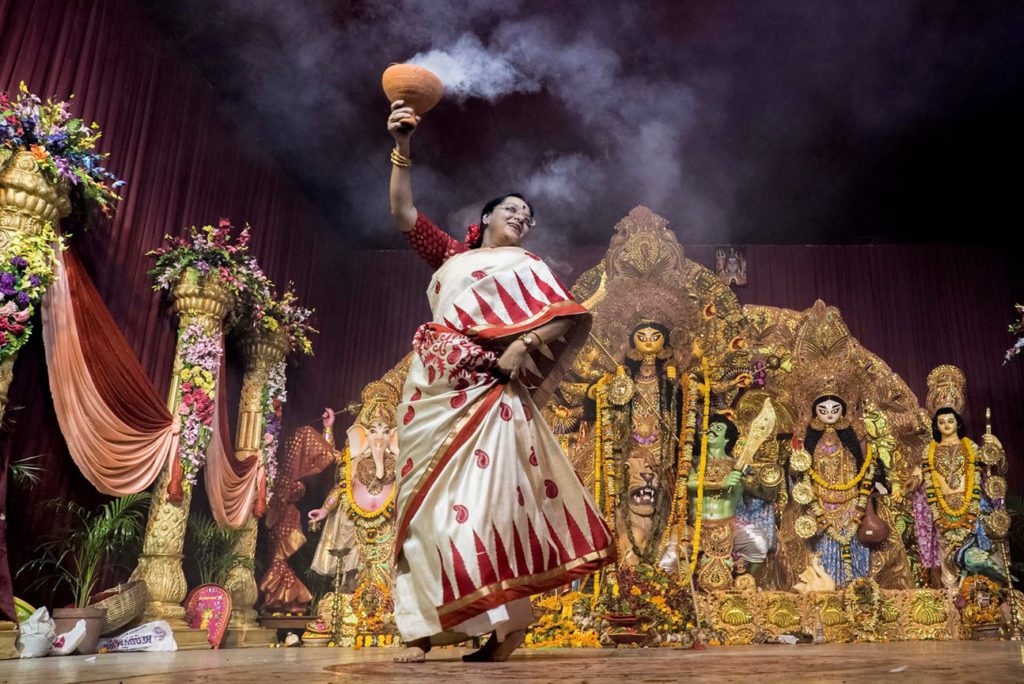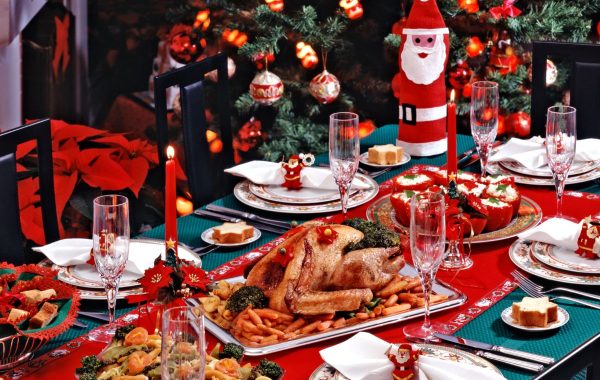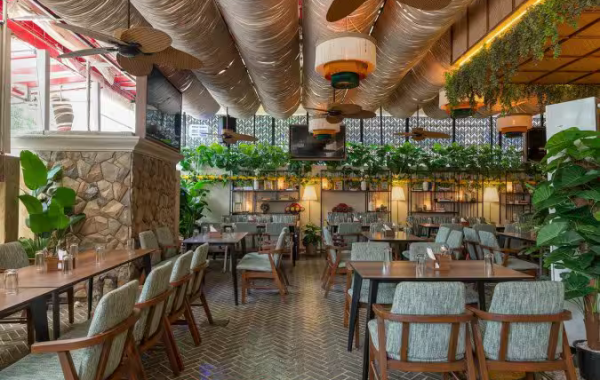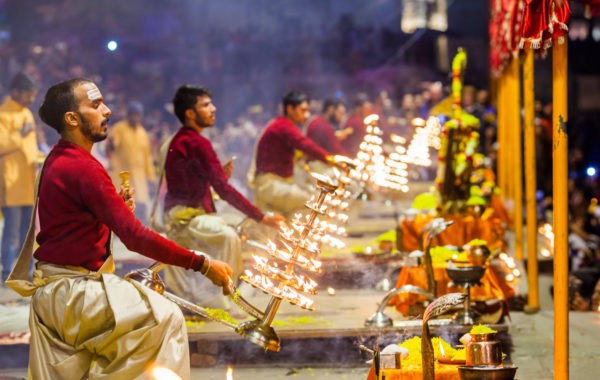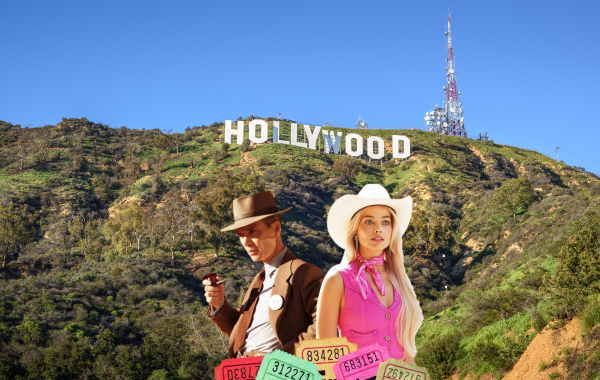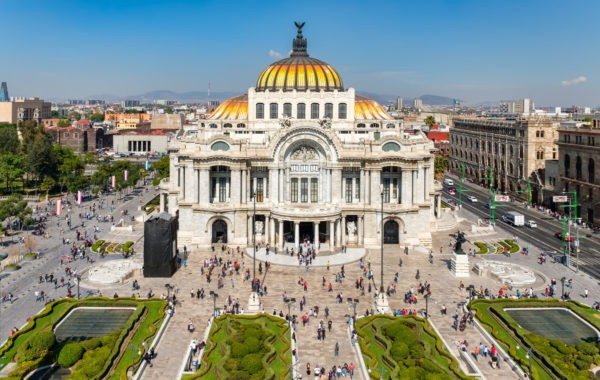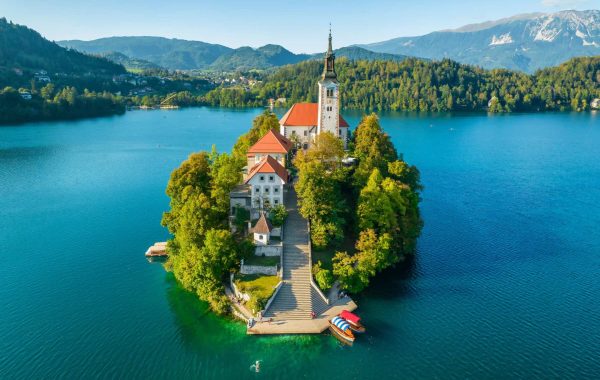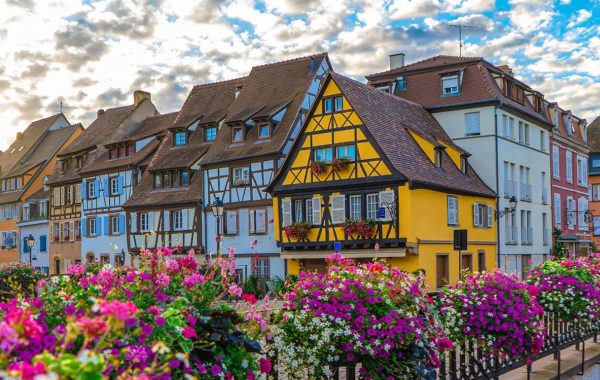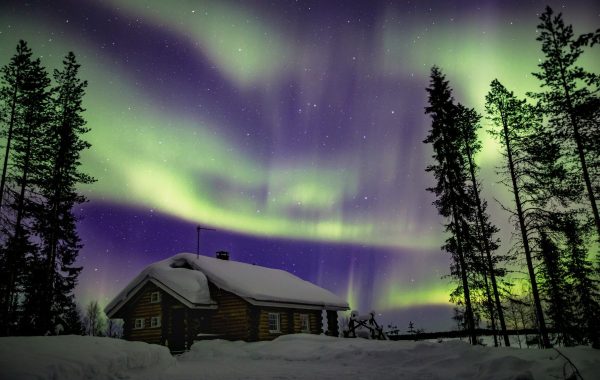How to Eat, Pray and Enjoy in Kolkata During Durga Pujo
With that magnificent array of awe-inspiring pandals and majestic idols, Kolkata undergoes a dramatic transformation during the five days of Durga Puja. The City of Joy metamorphoses into a massive festival ground with dazzling sights and sounds radiating joy at every corner. The festival’s beauty lies not just in the arrival of the goddess and her ceremonial worships but also in the paraphernalia attached to the festival over the decades. Every nook, every corner, every road, street, and house is adorned so much that it is impossible not to get absorbed in the spirit of Durga Puja.
There’s magic in the Kolkata air with colours reflecting off the pandals, those magnificent, glittering, multi-coloured marquees, long adda sessions over deliciously festive food and the best of current fashion – Durga Pujo is all that and more and the best place to experience it all in the city of Kolkata. While the festival lasts for 10 days, it is from the fifth day or panchami that Calcuttans start their endless pandal hopping, navigating their way through endless crowds and queues. However, the last three starting from Ashtami and leading up to Dashami are the best days of the festival, that no traveller should miss.
Kolkata’s Durga Puja festival has become the latest event to be inscribed in the ‘Representative List of the Intangible Cultural Heritage of Humanity’ by the United Nations Educational, Scientific and Cultural Organisation (UNESCO) and here are 7 Pujo experiences to have in Kolkata which go beyond pandal hopping.
Watch the Ashtami Pushpanjali
On Ashtami (the eighth day) men donned in Dhuti-Panjabi (dhoti-kurta) and women wearing red and white sarees come together with their families in their neighborhood’s pujo for the auspicious Ashtami Anjali (pushpanjali). People fast from the morning till the anjali/prayers are offered to Durga Ma, which is followed by an elaborate and delicious bhog. Sandhi puja follows in the evening, an essential part of Durga Puja and lasts from the final 24 minutes of Ashtami till the opening 24 minutes of Nabami. At this juncture (the “Sandhikhan”), Ma Durga is worshipped in her Chamunda form commemorating the victory of good over evil. The arrangements are grand – 108 lotuses and 108 earthen oil lamps are offered to the Goddess.
Dance to the Rhythm of Dhaak Beats | Dhunuchi Naach
An integral part of the celebrations is the Dhunuchi Naach, a dance performed to the beats of the dhaak and the sound of Kansor, with the purifying smoke emanating from the dhuno and coir burning in the burner, is a crowd favorite at community puja venues in Kolkata and around the world.
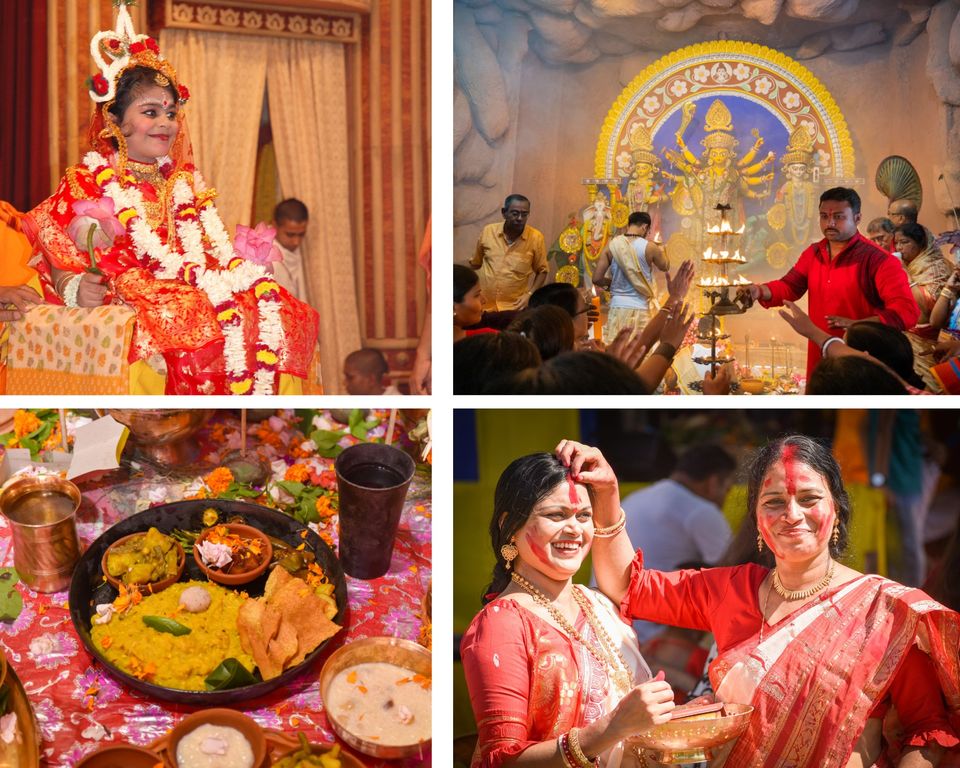
Catch the Kumari Puja
On the ashtami day, a girl aged between 5 to 8 years yet to attain puberty, is chosen for elaborate worship before the Goddess Durga. Kumari Puja or virgin worship is an important ritual of the festival, first performed by the great saint Sri Ramakrishna Pramhansa. Belur Math in Kolkata performs an unparalleled Kumari Puja in the city.
Feast on the Lavish Durga Pujo Bhog
The traditional bhog (blessed food) is an auspicious part of Durga Puja, as not only does it offer traditional Bengali food, but it also celebrates Durga Puja by adding a hue of Bengali tradition with a dual role, of serving the community (people visiting the pandals) and by being an offering to the Goddess. Every pujo pandal serves generous servings of this mouth-watering and uber delicious bhog that features khichudi, labda(mixed vegetable curry), beguni (aubergine fritters) payesh (rice pudding), tomato chutney and papad on oak leaf plates (shaal pata). A meal so satisfying is easily one of the highlights of Durga Puja.
Devoured A Scrumptious Regional Festive Meal
How can one visit Kolkata and not indulge in some good-old, luxurious regional spread? Across the city, specialty Bengali restaurants serve up a carefully curated Puja special menu that features an elaborate and quintessential Pujo feast that include Luchi and Cholar dal (deep fried flatbread and lentil curry), Kosha Mangsho (slow-cooked spicy mutton curry), Daab Chingri (large prawns cooked with mustard in a tender green coconut) Shorshe Ilish (Hilsa fish in mustard gravy), Bhetki Macher Paturi (fish fillet in a spicy mustard paste steamed in a banana leaf), Mocha Chingri (banana flower cooked with prawns), Aloo Posto (potato cooked with poppy seed paste), Chitol Macher Muitha (fish ball curry) and Chingri Malai Curry (coconut prawn curry). You can sample some of the festive fare at specialty Bengali restaurants across the city: Aaheli at The Peerless Inn, Oh! Calcutta, Kasturi, Bhojohori Manna, Kewpie’s Kitchen, Sonar Tori, 6 Ballygunge Place.
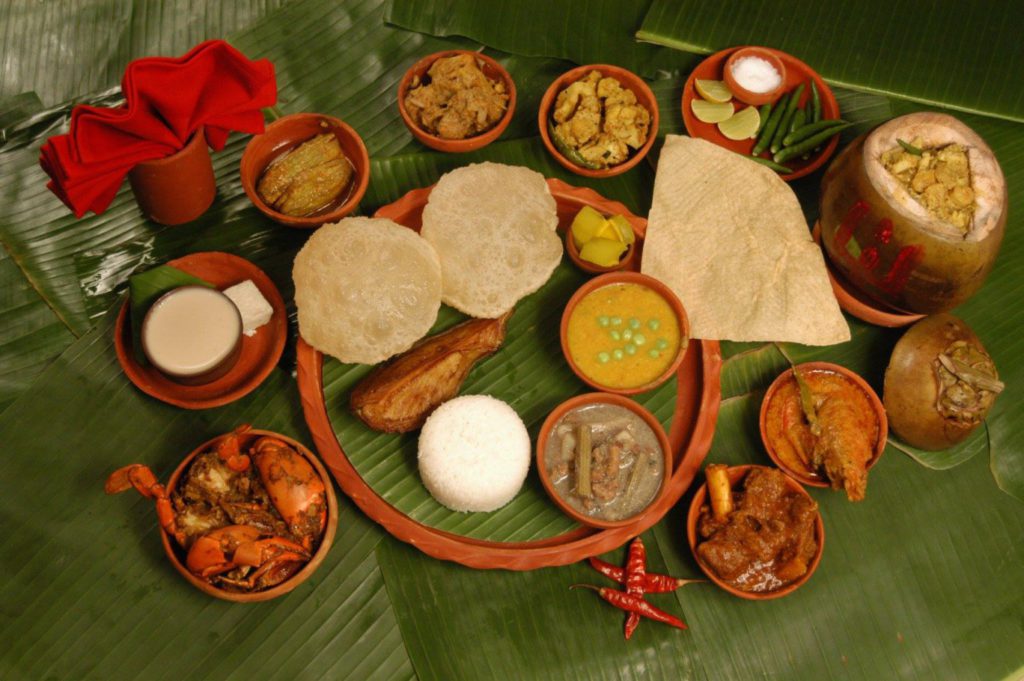
Witness Sindoor-Khela
On dashami or the tenth (and last) day of what is an emotional week full of joy, laughter, festivities, food and unity, a gloom of sadness mixed with anticipation strikes the city. The day sees one of the most striking and colourful rituals in the whole country – where women smear sindur on the idol and each other’s foreheads and cheeks in a ritual known as sindur khela. Only married women participate in this almost theatrical ritual by adorning Maa Durga and themselves with red vermillion as a symbol of female energy, auspiciousness, and luck.
Watch the Immersion Rituals
As the euphoria and exuberance of Durga Puja comes to an end, the time comes to say goodbye to the festive mood with a heavy heart. According to tradition, on the completion of 10 days, Ma Durga returns to Kailash from her maternal home. After the sindoor khela, on Dashami, the idols of Durga Ma is first shown around the neighbourhood before being taken to the Ganges for the immersion. The Bhashaan procession as it is called is a sight to behold with marching bands, and Dhaakis, dance and music accompanying Durga Ma. The departure of Ma Durga amid the slogan “Ashche bochor abar hobe” signifies the eagerness of Bengalis for the next puja.
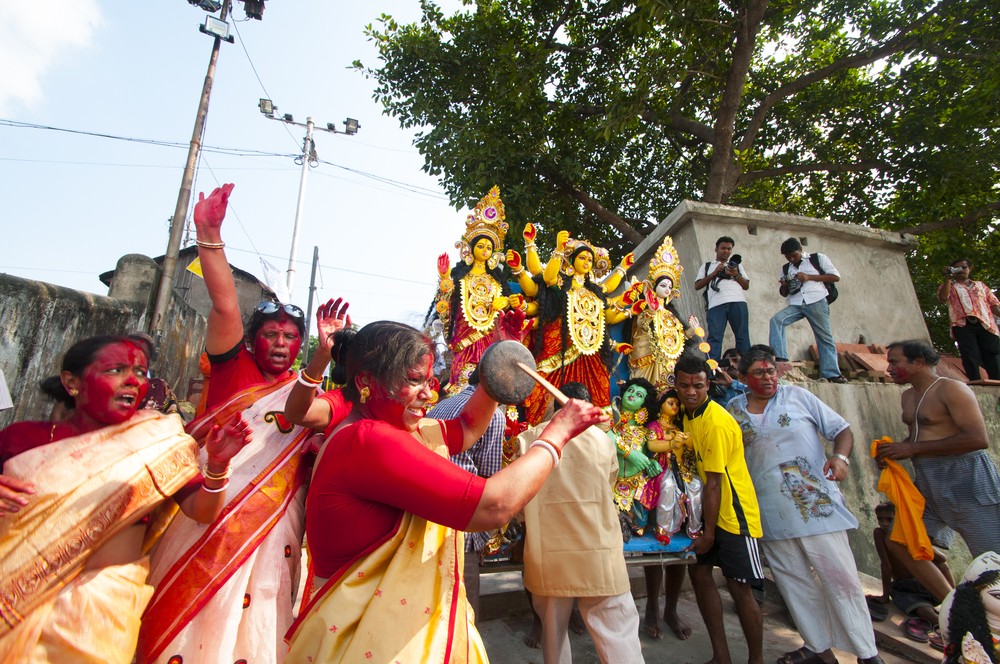
On the evening of Dashami, relatives and neighbours wish each other Shubho Bijoya and exchange gifts and sweets.
Related Coverage
Festive Feast | 8 Must-Try Dishes During Durga Puja


